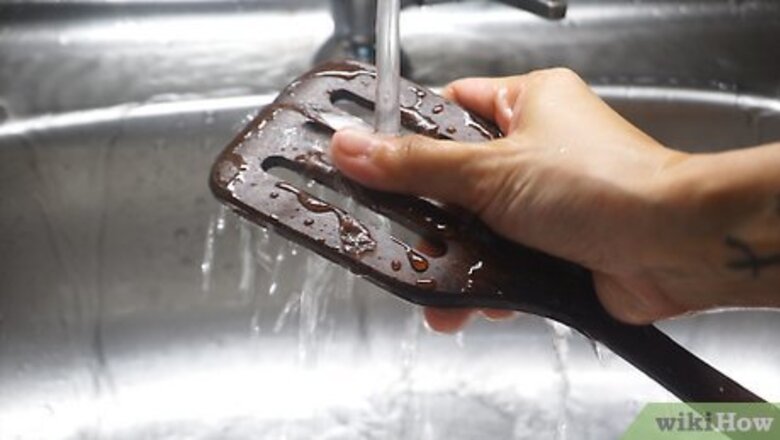
views
- Rinse and scrub your utensils with mild dish soap immediately after using them.
- Remove stains and odors by covering the utensil with baking soda and lemon juice. Use your fingers to mix the ingredients into a paste and work it into the wood.
- Disinfect utensils by soaking them in hydrogen peroxide or equal parts water and vinegar for several minutes to half an hour.[1]
Cleaning Wooden Spoons After Use
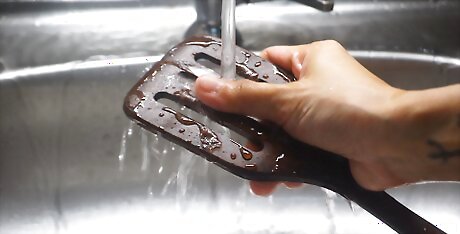
Rinse immediately after use. After using a wooden spoon, first rinse it under warm water. Don’t soak it in dishwater, since dishwater can harbor bacteria that can get absorbed by the wood. Soaking can also cause wooden kitchenware to split or crack.
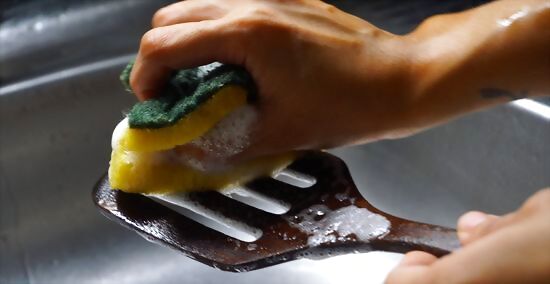
Wash the utensil by hand. Use a mild dish detergent and warm water for everyday washing. Scrub with your fingers, a sponge, or other dish cleaning pad. Never wash woodenware in the dishwasher, as the rapid drying can cause damage, and dishwashing cleaner ages wooden surfaces.
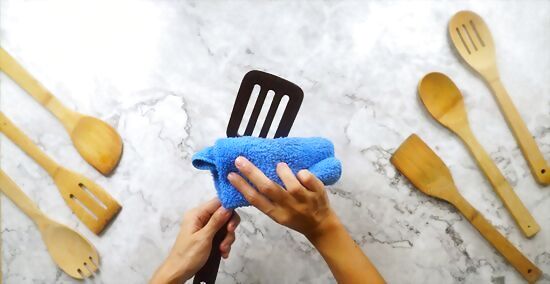
Rinse and towel dry. Thoroughly rinse away any suds. Use a clean towel to immediately dry off the wooden spoon, then let it sit out before storing it. Don't let wooden utensils air dry alone, as the leftover moisture could cause warping or cracking.
Using Home Remedies to Disinfect and Remove Odors
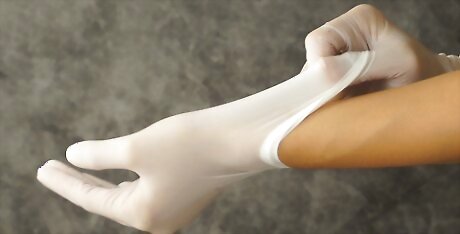
Wear gloves before cleaning with bleach and other skin irritants. If you’re trying to salvage an old wooden spoon you’ve found packed away, using a very mild bleach solution can be an effective disinfectant. However, before cleaning with bleach and other potential skin irritants, you should put on a pair of rubber gloves.

Get rid of food stains using baking soda and lemon juice. Pour a small amount of baking soda onto the spoon. A teaspoon or so should cover it, depending on its size. Squeeze enough lemon juice to cover the spoon on its surface to make a paste with the baking soda. Use a cloth or your fingers to work it through the wood, and try to work in the direction of its grain. Rinse thoroughly with water when finished, and repeat if necessary. Add a coarse salt to the mixture for more abrasion.
Disinfect using hydrogen peroxide. Place your wooden spoon in a basin, pan, or sink. Pour hydrogen peroxide over the utensil. Use your hands or a clean sponge to work it all around the spoon. Let it stand for a few minutes so it can fizz, soak in, and kill germs. Rinse using warm water and either your hands or a clean sponge. Repeat as needed or if desired. EXPERT TIP Melanie Garcia Melanie Garcia Professional House Cleaner Melanie Garcia is the Co-Owner of Oranges & Lemons, a small, family cleaning business based in Downtown Los Angeles, California (DTLA) in operation for over 40 years. Oranges & Lemons operates while partnering with the National Domestic Workers Alliance and Hand in Hand: Domestic Employers Network. Melanie Garcia Melanie Garcia Professional House Cleaner Another option to disinfect is using water and vinegar. Fill a spray bottle with water and vinegar or even just vinegar. Lay down the utensils on a paper towel and spray them with the mixture. Let the tools air dry.
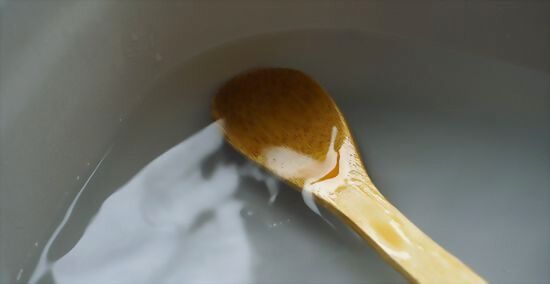
Soak wooden spoons in vinegar to remove odors. Mix equal parts hot water and vinegar in a basin or bowl that’ll fit the spoon to create a diluted solution. Place the spoon into the solution and soak for up to a half hour. Rinse thoroughly with hot water and towel dry immediately. You can add a teaspoon of lemon juice to help cut the vinegar smell. You don’t want to soak wooden utensils often, but it’s good to periodically soak and disinfect them, or to treat odors or any suspected mold growth by soaking.
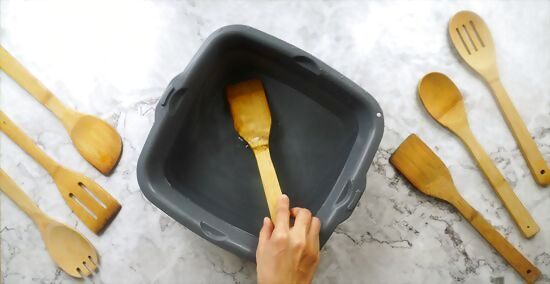
Soak in a mild bleach solution. Place a small amount of bleach into a soaking tub, such as a sink, large bowl, or dishpan. Fill the remainder with hot water. Use a ratio of one part bleach to 20 parts water. Place the utensil in the solution and soak for several minutes. Rinse with hot water and soak for a few more minutes to remove any residual bleach. Towel dry the spoon then let it sit and air out. Bleach is best used on utensils that have been packed up or out of use for a long time and might have picked up mold or germs.
Conditioning and Maintaining Wooden Utensils
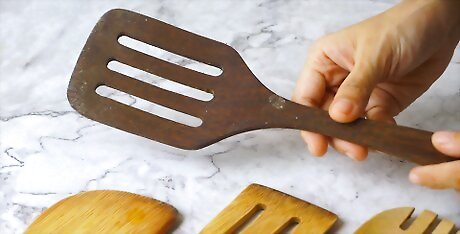
Inspect your spoon periodically for signs of wear, stains, or grease. Examine your wooden utensils for any signs of warping, cracking, or splitting. Check for any fuzziness that develops from the grains swelling as they get wet over time. Notice any discoloration, such as stains left by cooking with turmeric. Create a routine “check-up” for your wooden utensils and extend their lifespans by treating stains, sanding rough surfaces, and conditioning the wood.
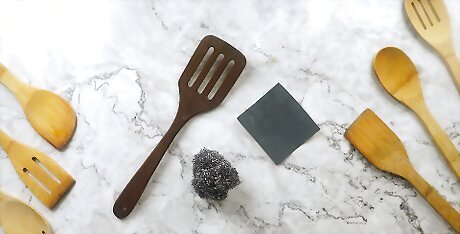
Use steel wool or sandpaper to smooth surfaces. If it feels fuzzy, it is probably because the grain of the wood has been raised from the soaking. If it’s just a little fuzzy, take a fine grit sandpaper to gently smooth the utensil. For rougher patches, you should to begin with a coarser grain sand paper and finish with a finer grit. Keep a supply of 100, 200, and 400 grit sandpapers on hand just in case. If you opt to work from a coarser grit to a finer grit sandpaper, wet the spoon in between sanding sessions. Give it a rinse in hot water, then towel dry and let it sit to further air dry for a half hour or so. When you sand with the finest grit sandpaper for the final time, wet the paper and the spoon for best results.
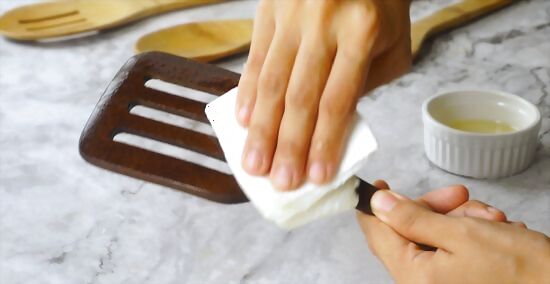
Oil wooden spoons periodically to renew and retain vibrancy. Conditioning a wooden spoon using one of a variety of options will help extend its life. You can use a paper towel or a small piece of clean cloth to administer the oil to the utensil. Let it sit for about 20 minutes, then wipe thoroughly with a clean, unoiled cloth. You can use a variety of oils: Mineral oil, a food safe oil that is commonly used by restaurants to increase the longevity of wooden utensils. Coconut oil, preferably that’s not been processed by high heat. Vegetable or canola oil will work in a pinch. You can purchase a specialty non-toxic oil from a cook’s warehouse or restaurant equipment store. Oil your wooden spoons when they start to look dry.


















Comments
0 comment